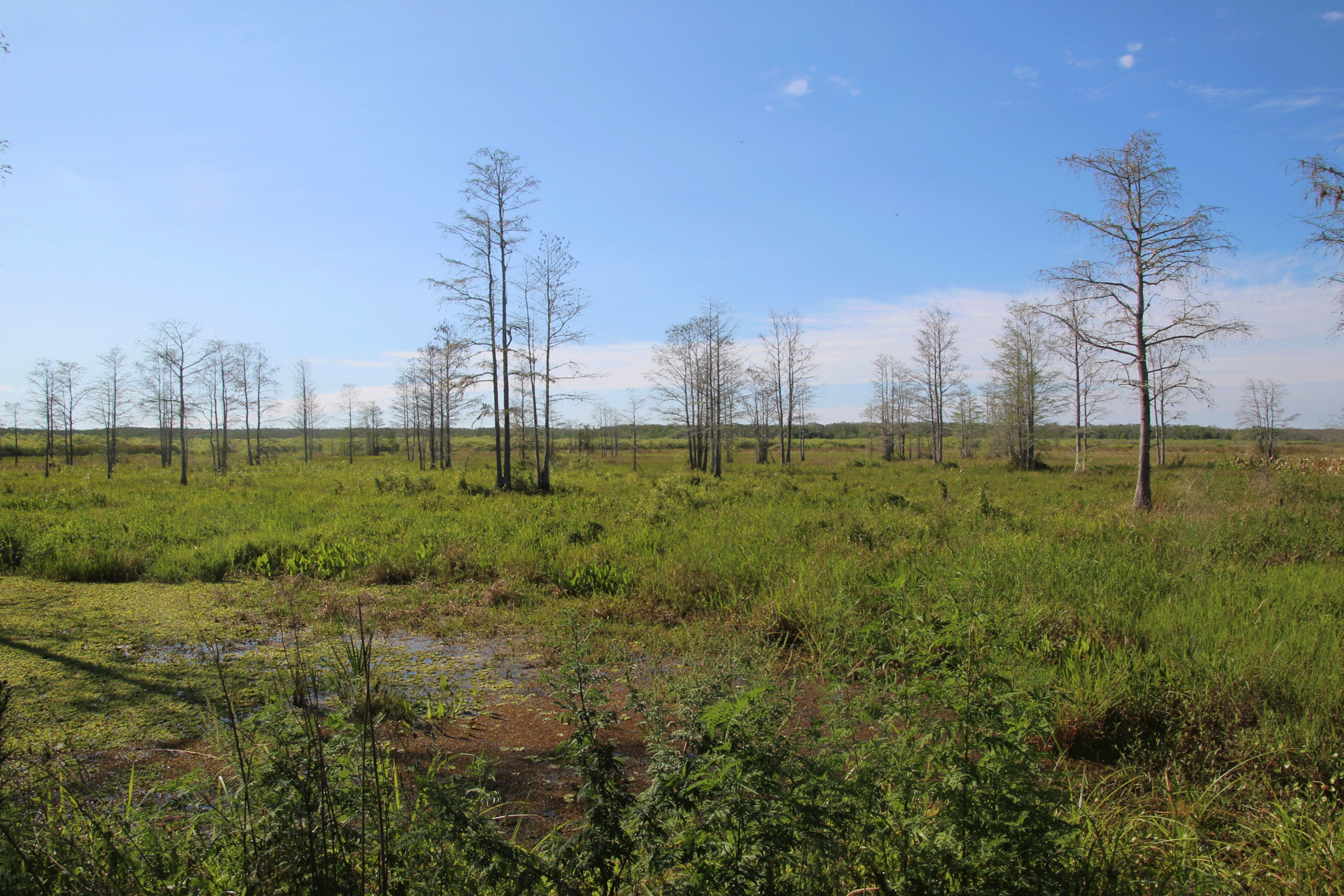Thanks to the generosity of several donors, the land management team exceeded its summer goal for the ongoing marsh and prairie restoration project. A variety of challenges including a global pandemic were overcome to reach this milestone of removing woody vegetation from 670 acres, taking us ever-closer to our goal of restoring 1,000 acres by 2023.
The three-phase restoration process, which began in 2018, consists of mechanically removing overgrown woody vegetation, followed by spot treatment of invasive plant regrowth and, finally, conducting a successful prescribed burn. Approximately 18 acres are now restored through all three phases. Once completely restored, these marshes and prairies can again function as biologically diverse wetland systems that remove nutrients from surface water before it reaches our estuaries, reduce the risk of catastrophic wildfires in our community, hold floodwaters during severe weather events, and provide habitat to many species of wading birds, amphibians, reptiles, and mammals.
The project is a major undertaking by the Sanctuary’s land management team, but it is increasingly important as more than 80% of wetlands in Southwest Florida have been altered or destroyed. Restoring 1,000 acres is an ambitious goal, as each restored acre carries a price tag of approximately $2,000. Fortunately, many generous donors have recognized the importance of this restoration work and have chosen to invest in its success.
One couple supporting these efforts, Dianne and Mike Shanley, made the decision to move to Southwest Florida from Chicago shortly after a 1995 visit to Corkscrew Swamp Sanctuary, where they fell in love with the wildlife and the wetlands that support them.
“Wetlands are very important for wildlife, especially birds,” says Dianne, “but for a lot of people, birds aren’t as important as building another real estate development.”
A retired human resources professional, Dianne encountered her first Little Blue Heron at the South Lettuce Lake. She said that the bird inspired her to become a volunteer.
“He/she was perched on a limb on a tree a few feet away from the boardwalk. I sat and watched the Little Blue for a good while before we continued on our way along the boardwalk.”
After that experience, she decided it had become her signature bird.
As seasonal residents of the Naples area, Mike and Dianne love to show off “their” boardwalk to friends and family. In 2002, Dianne began volunteering at the Sanctuary as a boardwalk naturalist. She says that when she speaks with visitors, she explains that wetlands are the filters for the water we drink and without them, life in Southwest Florida would be much different.
Dianne and Mike wanted to be a part of Corkscrew Swamp Sanctuary continuing to be an important environmental asset for Southwest Florida, and earlier this year, they generously supported 50 acres of the restoration. They strongly encourage others to do the same.
Learn more about the marsh and prairie restoration program.






